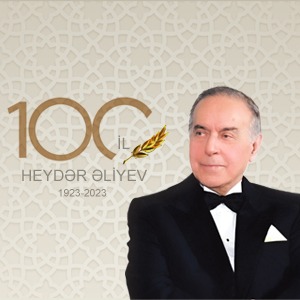
IN ANTICIPATION OF CHANGE
Month-long protests lead to some changes in Serbia
Author: Irina KHALTURINA
The anti-government protests in Serbia, unprecedented in both scale and nationwide reach, have now continued for months. Most participants are students, alongside representatives of various social groups. Prime Minister Milos Vucevic resigned amid the demonstrations, but many believe this will not quell the protests, which are expected to intensify in the near future. Observers note that the authority of President Aleksandar Vucic—who has held office since 2017 and led the ruling political force for 12 years—faces a genuine threat. In the event of snap parliamentary elections, his party may lose its absolute majority in parliament.
Echoes from the past
Protests of varying intensity have gripped Serbia since November 1, 2024, when a reinforced concrete canopy collapsed at the Novi Sad railway station, killing 15 people. On March 21, another victim died at a military hospital in Belgrade, raising the death toll to 16. Protesters blame the authorities for the tragedy, citing corruption, nepotism, negligence, and disregard for safety standards during construction. Shortly after the protests began, Construction Minister Goran Vesic resigned. He and 12 others responsible for the station’s reconstruction were later detained, but this failed to stem the discontent. The movement soon escalated into political demands, with calls to oust the ruling pro-presidential Serbian Progressive Party. Beyond corruption, protesters also decry the country’s economic woes—inflation, low living standards, poverty, and high crime—while foreign policy grievances, though contradictory, have also surfaced.
On March 15 in Belgrade, an estimated 100,000 to 300,000 people took to the streets. The rally was marred by an incident that fueled fresh opposition accusations against the government: the alleged use of powerful acoustic weapons, or "sound cannons." Witnesses reported that during a 15-minute silence for the Novi Sad victims, a shock wave—accompanied by heat and wind—swept over the crowd. Many described a deafening "sonic boom" resembling an aeroplane engine or train roar, while others heard whistles, explosions, or gunshots. Most recounted feelings of sudden fear and disorientation. Social media footage showed protesters fleeing in panic. The next day, dozens sought medical treatment for ear pain and dizziness.
The Serbian government vehemently denied using "any illegal means" and even proposed involving Russia’s FSB and the US FBI in the investigation. Interior Minister Ivica Dacic dismissed the "sound cannon" claims as fabricated and politically motivated.
Foreign provocation
President Vucic, pledging a thorough inquiry into the incident, insisted there would be "no copy of Maidan in Serbia." He accused foreign provocateurs of orchestrating the demonstrations, singling out organisations like CRTA (NGO Centre for Research, Transparency and Accountability) and Earshot (a human rights group) for spreading "misinformation." These groups have extensively covered the protests, with CRTA publishing a February 19 poll claiming 80% of Serbians support the students’ demands and a third have joined the demonstrations—including a growing number of ruling-party voters. Vucic retorted that CRTA is "largely funded by British, American, Swiss, Swedish, and other sources."
Deputy Prime Minister Aleksandar Vulin echoed these claims, vowing to prevent Western intelligence services from engineering a "colour revolution."
"The colour revolution in Serbia was organised by the US 'deep state'—the same forces undermining President Trump’s peace initiatives—alongside European intelligence agencies. Their goal is to destroy Serbia by installing pro-Western puppets. Most protesters are patriots, but their leaders are Western puppets. I expect radicalisation soon, but our security forces are prepared. Once a new government forms, stability will return," Vulin declared.
Resignations and elections
On January 28, Serbia’s National Assembly approved Prime Minister and former Novi Sad Mayor Milos Vucevic’s resignation, as the president moved to reshuffle the government. The administration now operates in a caretaker capacity. If no new government is formed by April 18, snap elections will be held in early June.
The outcome remains uncertain. Protest momentum is at a historic peak, with students—a key opposition asset—driving the movement. Their energy, mobility, and lack of overt leadership (despite surprisingly tight organisation and probable external funding) make this a protracted battle. Yet their demands are fragmented or contradictory: while accusing Vucic of neglecting national interests in Kosovo and Republika Srpska BiH and distancing from Moscow, they simultaneously push for closer Western ties and "Europeanisation." This incoherence risks destabilising Serbia during a volatile geopolitical moment.
Vucic himself embodies these contradictions: courting EU membership while backing Kosovo’s Serbs, balancing pro-Russian gestures with anti-Kremlin rhetoric, and supporting Ukraine despite public hostility toward NATO.
Brussels’ stance is equally ambiguous. Though many European parties disdain Vucic, they hesitate to fully endorse the protesters—especially when crowds brandish "Kosovo is Serbia!" banners. Some analysts suggest Western attempts to co-opt the protests failed, leaving them less a "colour revolution" than a broad-based outcry against systemic injustice.
The likeliest scenario is Vucic retaining power but sharing it. His current coalition—the Serbian Progressive Party, Socialist Party, and Oath Keepers—performed well in 2023’s elections, but opposition figures may now join the government. The wildcard is whether new political forces emerge from the protests.
Amid this turmoil, Serbia finds itself at the mercy of global shifts triggered by Donald Trump’s US presidency and its upheaval of the "world order." Belgrade knows the EU and NATO’s futures hang in the balance—and with them, the Balkans’ dormant territorial and ethnic tensions. The danger is palpable. After all, it was here that the spark igniting World War I first flared.
RECOMMEND:


 119
119

